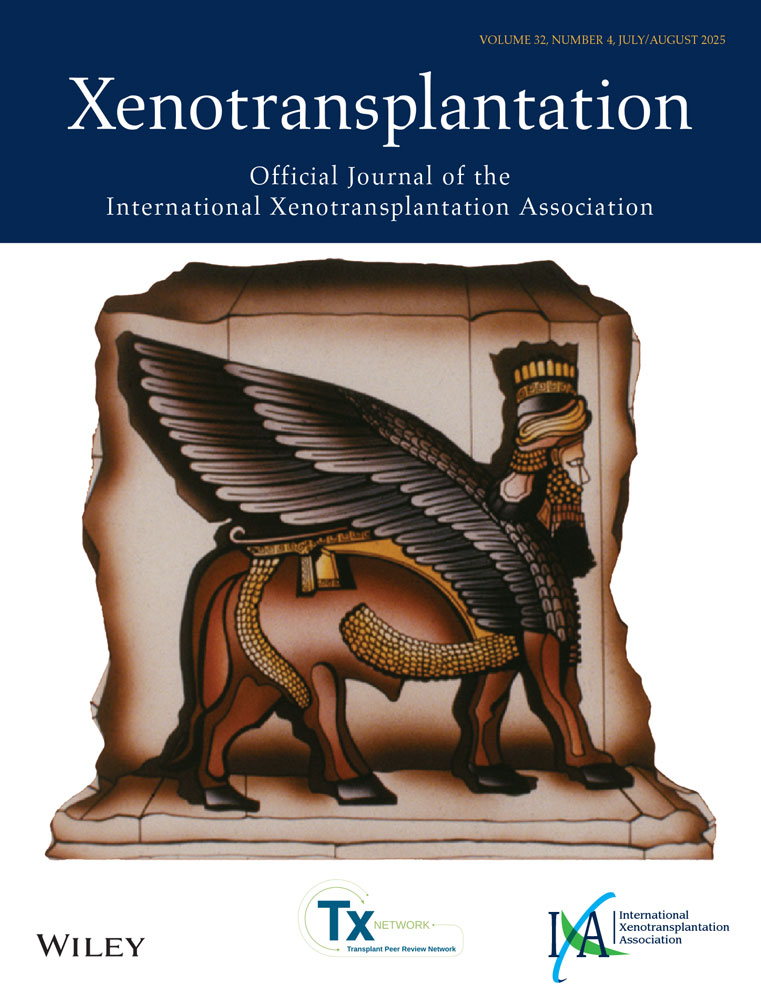Characterisation of human natural anti-sheep xenoantibodies
Abstract
ABSTRACT: Currently, the pig species is regarded as the most likely organ donor for human xenotransplantation in the future. However, it cannot be granted that the pig will be the optimal species of choice. We have studied human anti-sheep antibodies in comparison with anti-pig antibodies. The anti-sheep lymphocytotoxic and hemagglutination titers were in the range 8 to 128 and 2 to 32, respectively, in single individuals, which were considerably lower than the anti-pig titers of these individuals. Perfusion of sheep kidneys with human blood reduced the anti-sheep xenoantibody titers to zero as measured by lymphocytotoxic, hemagglutination, and sheep aortic endothelial cell antibody binding assays. The perfused kidneys showed generalised depositions of human IgM and C3c in the vascular tree and focal depositions of C1q and fibrin. Obliteration of capillaries by human platelets and polymorphonuclear cells were observed. Total neutral glycolipid fractions were isolated from sheep intestinal, pancreatic, and kidney tissues. By using a chromatogram binding assay, a monoclonal anti-Forssman antibody identified a single compound with five sugar residues in all organs. Several glycolipid bands were stained in all organs by the Galα1-specific lectin I-B4 from Griffonia (Bandeiraea) Simplicifolia. A human AB serum pool showed staining by both IgG and IgM antibodies of the Forssman and Galα1-terminating components as well as some other, not structurally identified, components. The Forssman and Galα1-reactivity in human sera could be eliminated by immunoadsorbtion using Forssman and Galα1–3Gal-immunoadsorbent columns, respectively. Immunostaining of sheep kidney tissue sections showed the presence of Galα1-terminating epitopes by immunoperoxidase and immunogold silver staining techniques. Proximal convoluted tubules showed a strong staining, while thin loops of Henle, collecting ducts, urothelium, and vessels showed a weaker staining. Distal convoluted tubules and thick loops of Henle were completely negative. In summary, human serum contains anti-sheep xenoantibodies reacting mainly with the Forssman and Galα1-determinants in sheep tissues and the anti-sheep antibody titers are lower than the corresponding anti-pig titers.




